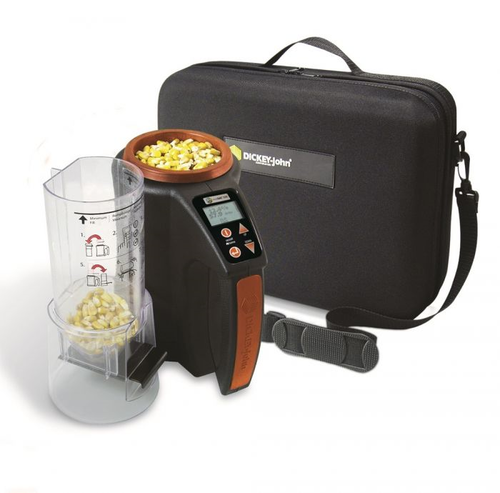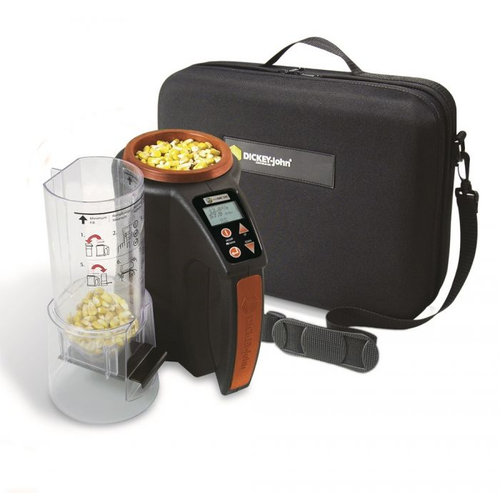4 Pieces of Equipment to Help Keep Feed and Grain Safe and Dry
One of the toughest parts of the agricultural industry lies in maintaining the appropriate storage facilities. If you've got animals, their feed needs to be both safe and dry to ensure they're getting a safe meal every day without fail.
But keeping feed and grain both dry and safe at all times is a task that's easier said than done. You need the right equipment to ensure this, which means you need the expert help of the team here at Barn Door AG.
We've listed 4 essential pieces of equipment you need to keep your grain safe and dry, including some tips and specifications where applicable. That way, you'll just need to tick them off your list to make sure your farm is fully prepared.
Storing Feed and Grain: Get a Grain Bin First
Let's get the most obvious aspect out of the way first. You need a quality grain bin to be able to store all your grain and feed throughout the seasons.
Chances are you already have a quality grain bin, but there are parts of a grain bin some farmers forget to consider. For example, ensure you have the right size bin to fit your property.
It's no good having five different bins because none of them are big enough, or one colossal bin that you'll never manage to fill. You should also always clean your bin regularly.
This is to ensure the grain you're storing is kept uncontaminated. If you don't already have a grain bin, get one first. Now, we're going to inform you of four more pieces of equipment your farm needs to keep feed and grain safe and dry.
1. A Hopper Walker
Handling your grain can be the trickiest part of storage, especially when you have huge quantities of it at any one time. To properly maneuver your grain you should invest in a dedicated hopper walker.
These days you can purchase remote hopper walker models that can be operated using a remote control. The finest models also possess automatic stopping capabilities.
What sets a hopper walker apart from other methods of grain transportation is that it was designed and created by farmers, for farmers. You know, therefore, that a hopper walker has been made to fulfill the job in hand as efficiently as possible.
2. Grain Gauge Bin Level Monitor
Remember when we mentioned grain bins above? This is why!
Like we said in our earlier section, you need the right size grain bin for your farm. But it's incredibly hard to monitor the quantity of a grain bin from the outside. They're not transparent after all!
That's why you need a grain gauge bin level monitor. This device can be installed onto your grain bin and will accurately monitor the contents. It's both easy to install and understand, meaning you don't have to scale your huge bin every time you need to check your feed and grain levels.
This can ensure you're always on top of your stock and storage levels. But it's not the only monitor you need when it comes to your grain bins.
3. Grain Moisture Tester
It's one thing to monitor the storage levels of your bins, but you also need to keep track of the moisture levels when modern farming. That's why you need to invest in a moisture tester for your grain.
There are a number of different moisture testers on the market today. You should find a tester that works for a number of different grain variations, and that has an accurate readout of moisture levels.
Some testers are even portable and come with protective carrying cases. That means you can test grain as you transport it, to ensure moisture levels are suitable at all times.
With a moisture tester and a grain gauge bin level monitor, you'll have all the data you need to keep feed and grain both dry and stored safely.
4. Grain Weight Scale
The fourth equipment solution your farm needs when it comes to feed and grain storage is an accurate weight scale. A weight scale can provide a huge amount of data when it comes to your feed and grain.
This includes determining the yield and feed quality as well as, crucially, helping you understand storage capacities. A suitable scale should be both portable and accurate.
This way you can use it to weigh a portion of your grain before storage to access this important farming data. This ensures you can store all of the grain you have and allows you to optimize storage capacity in the future.
Make sure you invest in a scale that is easy to read and understand. It's no good purchasing a scale that looks the part but doesn't transmit the information to you in a simple or effective manner.
Once you start obtaining weight results for your grain, you'll realize all the new storage potential your farm has access to. You can then formulate a process of grain and feed storage, including weighing, moisture checking, and monitoring storage levels of your bin.
This is all after transporting using your hopper walker. With this equipment, you'll find feed and grain storage easier than ever before!
Where Can I Find Out More About Feed and Grain?
Now you know the four key equipment types you need to invest in to improve your feed and grain yield and storage solutions. But we know you likely have more questions about agriculture, or feed and grain specifically.
You can find all of the four listed items on our website. We stock the finest solutions to your agricultural needs at affordable prices.
Once you've got these items, you might be looking for future deals on your agriculture solutions. To ensure you don't miss anything, make sure you monitor our deals page alongside your grain!
 US Dollars
US Dollars
 Canadian Dollar
Canadian Dollar
 Australian Dollar
Australian Dollar
 Euro
Euro


